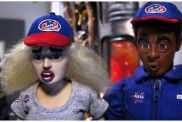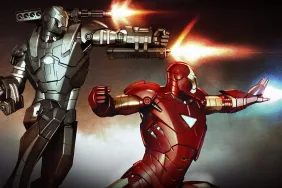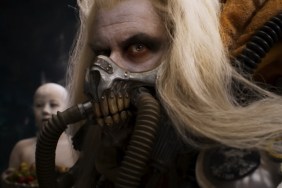
Near the end of 12 Years a Slave, Chiwetel Ejiofor as Solomon Northup — battered, beaten and defeated — turns and looks straight into the eyes of every member of the weary audience. Living as a free man in Saratoga, New York in 1841, Northup was abducted and sold into slavery where he remained for twelve long years. Looking into his eyes, questions arise — What is he thinking? What is the audience thinking? It’s a scene that removes the idea of the audience serving as spectators. It’s a scene that says If you didn’t feel involved to this point, you are now.
Director Steve McQueen (Hunger, Shame), and his unflinching cinematic eye, delivers a film filled with shame, guilt, hatred, anger, rage, torture, anguish and tears. It rips your heart out of your chest and holds it before your very eyes. It’s a painful watch and one I won’t likely run to visit again, but this doesn’t detract from its quality. Thanks to those few seconds where our eyes lock with Northup’s, it makes for a moment where the entire audience is forced to reflect on what they’ve seen and interpret it in their own way. It’s a look that asks you to see Solomon not as a black man, but as a free man, no different than any of us, and it isn’t the first time the idea is addressed in the film, but it is the first time the onus is placed 100% on the audience and it’s a stroke of genius.
Yet, what must absolutely be mentioned and reiterated is the absolute horror this movie is to watch. A scene involving a hanging leaves a man dangling, with only the tips of his toes negotiating the muddy ground below serving as the difference between life and possible death. Choking and gasping for air, the soft squish of the wet mud is like needles in your ears. McQueen and cinematographer Sean Bobbitt first focus on his feet, then move to a wide shot as fellow slaves in the background get back to work, leaving the man to hang, afraid to interfere. A couple white people stare from the plantation windows and porch, the whole time the wet squish beneath the man’s feet continues as he chokes for a sliver of air. The scene goes on, and on, and on.
Similarly, a scene where another character is whipped, the flesh ripped from their skin into bloody tendrils, is one I had to close my eyes during. Yet, the sound of leather on flesh remained. I stopped counting at 35 lashes before it ended, I maybe saw ten of them with my own eyes, but couldn’t avoid the sound of the other 25.
Sound, in fact, weighs heavily on this film. Following Northup’s abduction he’s chained and tossed into a room with a concrete floor and wooden slats for walls. Every move he makes the chains strike and scrape against the floor at a nearly intolerable level. And when the ambient noise isn’t setting the mood, Hans Zimmer‘s cello-driven score threatens and taunts us with the promise of more to come.
John Ridley (Red Tails) adapted the screenplay from Northup’s autobiography, but I can’t help but give most of the credit to McQueen whose command of the story is so powerful he doesn’t need much more than a location and a few words of dialogue. Combine that with Bobbitt’s talent behind the camera and perfect casting from the top down and it’s hard to miss a beat.
Ejiofor has delivered the performance of his career and at times it must have been punishing to read what was in store each day. As an audience we’re asked to live in Solomon’s headspace for just over two hours, but production on the film lasted seven weeks. Add I can only imagine the time Ejiofor took to prepare for the role before filming a single frame.
McQueen’s frequent collaborator in Michael Fassbender plays Edwin Epps, a hellish man whose conscience rotted long before we meet him in this story. Personally I don’t know how an actor can even agree to a role such as this let alone find it within themselves to perform to the level Fassbender achieves here. To say he’s a man that’s easy to hate would be too kind. He’s a man I can’t even find pity for. Then again, I can’t even pity Paul Dano‘s John Tibeats, whose IQ wouldn’t needs more then five fingers to tally, and the whole time I watched any of these slave drivers I could only imagine the shame and hate they felt for themselves.
The performances, however, don’t all belong to the men. Newcomer Lupita Nyong’o will break your heart as Patsey. Targeted by Epps as his personal play thing and reviled by his wife Mary (a relentless performance from Sarah Paulson), Nyong’o’s contributions to the film are vital in ways I don’t want to completely reveal here. It really goes without saying her’s is a character we all feel a strong sense of compassion for, but Nyong’o’s performance serves to amplify that connection.
McQueen has a talent for directing emotionally raw features, all of them involving some level of dark suffering. Hunger, Shame and now 12 Years of Slave tackle subject matter most would rather bury under the rug and as a result it’s always hard to review films of this nature.
Such flawless filmmaking deserves every bit of praise we can dote on it, but at the same time it’s not pleasant to watch. In fact, watching 12 Years as Slave is to dwell in purgatory for 133 minutes. If you’re willing to subject yourself to its horrors you’ll be rewarded with some of the highest level of filmmaking you’ll see all year, but in the end you’ll be leaving the theater in a stupor.









